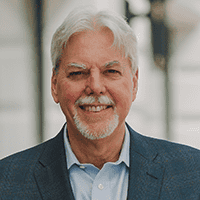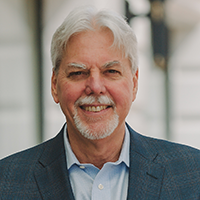
An Internet Pioneer Keeps Pace with the Digital Revolution
 It’s easy to forget now, nearly 19 years later, that Axos Financial was an early disruptor in the banking industry. Born as Bank of the Internet USA, it opened its doors in 2000, seven years before the introduction of the Apple iPhone. Its only product at the time was a simple checking account.
It’s easy to forget now, nearly 19 years later, that Axos Financial was an early disruptor in the banking industry. Born as Bank of the Internet USA, it opened its doors in 2000, seven years before the introduction of the Apple iPhone. Its only product at the time was a simple checking account.
Disruptors don’t always survive the revolution they help start, but Axos has both survived and thrived.
The San Diego, California-based direct bank may have been an internet pioneer, but it faced the same imperative to embrace mobile delivery that traditional banks have. It needed to keep pace with the digital revolution it helped spawn. The company changed its name to Axos last year to coincide with the launch of a new, customer-centric digital banking platform that provides both mobile and online access to customer accounts, and allows customers to personalize their experience to fit their needs and preferences.
“It offers a complete customization with respect to how each individual customer would like the experience to be provided,” says President and Chief Executive Officer Greg Garrabrants.
In the current fintech era that we find ourselves in today, where countless nonbank financial companies are attacking various pieces of the overall financial services market, it’s also important to note that Axos is a full-service, federally-chartered thrift that lacks only one thing that would set it apart from traditional institutions-a branch network. Axos targets personal customers with a variety of checking, savings and investment products, along with home mortgages, car loans and unsecured personal loans. And last year Axos gained an entry into digital wealth management with its acquisition of robo advisor WiseBanyan and its trading and investment management platform. The company has also negotiated affiliations with national financial brands like H&R Block-it provides interest-free tax refund advance loans to H&R customers-and Nationwide Mutual Insurance Co., where it will market co-branded products and services to Nationwide customers.
Axos provides a full suite of checking, savings and deposit products to small business and commercial customers as well, with 40 percent of its deposits coming from these sources. And the company has built out a robust commercial lending operation that focuses on national businesses, such as factoring, equipment finance and residential warehouse lending, and industry groups including homeowners’ associations and property management companies. This tendency toward specialization helped lift Axos’s net interest margin for its 2018 fiscal year, which concluded on June 30, to 4.11 percent. This compares favorably to the banking industry’s margin in the fourth quarter of 2018, at 3.48 percent, according to the Federal Deposit Insurance Corp.
A frequent criticism of digital banks is that they lack the inherent profitability of traditional banks, which can be interpreted as an attack on their legitimacy. With $10 billion in assets, Axos is solidly profitable, having reported record net income of $152 million in fiscal year 2018, a 13 percent increase over 2017. The company also posted a return of assets of 1.68 percent, a return on average equity of 17.05 percent and had an efficiency ratio of 39.58 percent. Axos has also performed well on Bank Director’s annual Bank Performance Scorecard in the $5 billion to $10 billion asset category, placing fourth in 2018, second in 2017 and third in 2016.
When Garrabrants joined the company as CEO in 2007, he brought with him a highly varied resume that included stints at McKinsey & Co., Goldman Sachs and a large thrift. Garrabrants also has a bachelor’s degree in industrial and systems engineering from the University of Southern California, and both a law degree and an MBA from Northwestern University. And at some point along the way, he also earned the chartered financial analyst designation. All of these experiences helped prepare Garrabrants to lead an entrepreneurial venture in an emerging industry.
“I view them all as approaching different sets of problems from different perspectives,” he says. “I am very intellectually curious, so a lot of those early roles allowed me to learn from a lot of very intelligent people about how to think about problems and to think about the way of approaching them-to learn a structured approach toward those. I do believe that it helped me accomplish the things that I wanted to accomplish at Axos.”
The following interview has been edited for clarity and length.
BD: The company was founded in 2000, and you’ve been very successful. What are some of the factors behind that success?
GG: There are several items, I believe. The digital revolution was beginning at that time. The ability to bank in a branchless manner, utilizing the toolkits that were available at that time, was just starting to take off. Now clearly, there were developments along the way that made that success more likely, such as the ubiquity of smartphones and digitization of other industries, which made people more comfortable interacting online. We have also maintained a very entrepreneurial culture while maintaining strong regulatory relations.
BD: What did the founders see in 2000 that gave them the idea in the first place?
GG: The environment at that time was very focused on the idea that the internet would revolutionize everything. I think that idea, while likely true, was hyped in a manner that overstated the immediate impact in certain industries. It was the era of eToys and ethnicgrocers.com, and the idea that there would be this disruption of almost every brick-and-mortar method of distribution of goods and services. While there were some successes in that area, there were a lot of failures.
I think the founders looked at all the industries that different entrepreneurs were attempting to disrupt and concluded that banking has products that are much more easily delivered than physical products online, relative to Pets.com delivering dog food and all these things. They decided this was the right industry to launch a more digitally-focused solution.
BD: You joined the company in 2007 as president and CEO. What attracted you to that opportunity?
GG: I’d been thinking for a long time about the different ways that financial services were going to be revolutionized. I’d spent time in both McKinsey and Goldman Sachs working on different strategies, or mergers and acquisitions, and thinking a lot about where I thought the future of financial services was going. So, when I got this opportunity I felt like it was sufficiently entrepreneurial, because it was small enough that I could make a big impact. And I had a fairly clear vision of where I wanted to go. I presented that vision to the board of directors in great detail, and I think that was instrumental in them selecting me over others.
BD: You have a highly-varied background. Goldman Sachs, as you just mentioned, McKinsey & Co. You worked at a big thrift, you’re a lawyer, you’re a chartered financial analyst. What’s the common thread through all of those experiences?
GG: I view them all as approaching different sets of problems from different perspectives. I am very intellectually curious, so a lot of those early roles allowed me to learn from a lot of very intelligent people about how to think about problems and to think about the way of approaching them-to learn a structured approach toward those. I do believe that it helped me accomplish the things that I wanted to accomplish at Axos.
BD: What drove the company’s strong results in your most recent fiscal year?
GG: The primary drivers really hadn’t moved significantly from the prior several years. Most of the growth was driven by existing business units continuing to grow and perform. I think the biggest accomplishments weren’t necessarily directly related to items that had an immediate impact on the income statement but were more focused on the future. Last year we launched our Universal Digital Bank, an online platform built entirely from scratch. That was instrumental in us being able to work with Nationwide Insurance on a strategic partnership, which included the purchase of their national digital bank. Those accomplishments didn’t show up in last year’s income statement, but they are important for our future.
BD: Your relationship with Nationwide-why is that important, and what will that do for you going forward?
GG: Nationwide is obviously an incredible company. They have a wonderful brand, and they have a very collaborative spirit in the way that they wish to work with us in the future. They have an incubation group and an innovation lab that is interested in working with us on a variety of different initiatives to be able to determine how to monetize each of our customer sets and to innovate around the financial services business generally. We think that it will generate a lot of interesting innovations over time as we work together.
BD: Two things-your rebranding of the company and your Universal Digital Bank platform-I want to talk about them separately, but were they connected in the sense that the new technology created an opportunity for a new brand? Or did you need a new brand, even if you hadn’t changed the technology?
GG: We needed a new brand, even if we hadn’t changed the technology. In some respects, I would say that the branding and the name were always controversial. It provided a very clear indicator of the bank’s delivery method. When we were founded, that name had more meaning, because utilization of the internet may have been thought to be separate from the way that customers interacted with businesses generally, but over time the internet has become so ubiquitous that it just simply isn’t necessary to call it out as anything particularly special with respect to the way customers interact with us.
BD: Where do you primarily promote the new brand? Do you do it all digitally?
GG: It’s currently all digital. We have hired a branding and marketing agency that later this year will be engaged in a variety of digitally-oriented promotions. But I don’t foresee, in the next couple of years anyway, that we will be doing a significant amount of mass-market advertising.
BD: Is branding and marketing a bigger challenge for a digital bank than it would be for a traditional bank that has a branch network? Or does it not matter for a digital company, because a digital-only company is only going to be found in the digital space anyway?
GG: Every brand impression is meaningful. So, to the extent that there are branch locations that provide meaningful numbers of brand impressions, on balance those are probably helpful. I think the question always is, with respect to the branch locations that provide those impressions, what is the overall cost of those impressions relative to the ability to generate those similar impressions digitally?
BD: How different is your Universal Digital Bank platform from what you were using previously?
GG: It’s very different. The fundamental conceptualization behind it is essentially that it creates an app store behind the password that allows us to add financial services products to our platform and interconnect with partners in a seamless way through APIs. For example, with respect to Nationwide, we are able to add products and services to our platform through the design of the platform in a seamless manner. What it really does is provides us the flexibility to create offers, personalize the user experience, and add a variety of products and services over time to continuously improve the platform in a manner that will allow us to better serve customers and to serve them more efficiently.
BD: This sounds almost as if the customer could actually, through the app store, customize their banking experience with Axos.
GG: That’s exactly correct. The customer has the ability to enter the store and select not only what alerts they would like to have, but what products they would like to display. It offers a complete customization with respect to how each individual customer would like the experience to be provided. They can decide what alerts they want to receive, what products they want to display and what services they would like to be informed of.
BD: Is the platform agnostic when it comes to traditional online versus mobile, or does it lean in one direction or another?
GG: With respect to the mobile design, you can access the platform two ways. The first is through a native application that allows the customer to interact with a platform, and that native application also allows the same customization and the modifications that would be available through a desktop. The customer can also log on to a desktop application and have a mobile-optimized experience without being in the native application. We’ve worked very hard to make sure that the services and the products are available equally through the desktop as they are through mobile devices.
BD: Let’s talk about your customer demographics for a moment. Your customer distribution is nationwide and seems to be concentrated in major urban markets. Who do your customers tend to be?
GG: Our customers tend to be upper income relative to the U.S. population, and we tend to track reasonably well the demographics overall from an age perspective of the population with a slight skew below the over-75 crowd, which we are underrepresented in, and a slight skew toward baby boomers. I think the reason for that is severalfold. One is that in our mortgage portfolio we tend to have larger loans and higher-income individuals, and we also have products and services that are designed to provide a lot of value for folks that may have slightly higher balances. I think that skews the distribution there a little bit. Many people believe that we have a very heavy millennial distribution, and what we’ve found is that there’s a wide variety of technologically-savvy customers across age groups who are able to interact with us.
BD: Do you see millennials as a customer base that’s critical to your future?
GG: Clearly, in the natural evolution of a customer developing and going through the various life stages, millennial customers buy homes and take out other financial services products and can become profitable customers over time. I think the question of how you’re attracting those customers at any one period of time is always interesting. I think one area where we do see opportunity with millennials is the acquisition that we have announced but not yet completed, which is WiseBanyan’s robo-advisory service, which does tend to have a more millennial age demographic in their customer base. It’ll be interesting to see, as we integrate those services into the banking side, how that moves our customer demographic.
BD: How does a rising rate environment impact your competitiveness in the deposit market?
GG: The rising rate environment impacts different business lines differently. The traditional online savings environment has become much more competitive, partially due to the rising rate environment, but also because many banking institutions have broken off and created separate online brands. I would not have expected that Union Bank would create a PurePoint [Editor’s note: PurePoint was created by MUFG Union Bank, N.A. as a separately branded digital platform that markets savings products], or that many of the institutions that are traditionally bricks-and-mortar oriented would decide that they were going to create national digital banking brands that would focus on high-yield savings products.
Our goal is to differentiate our services from those products, which I believe are significantly less sophisticated than the services they offer in their traditional banking platform. Our goal is to be able to differentiate our services based on the breadth and depth of those services, the convenience associated with them and the customer service experience, and I think that we’ve gone a long way toward being able to do that. Banks that are looking to grow deposits are recognizing that de novo branching is a very difficult model to make work, and they decided that they need to have at least a foot in the digital banking marketplace.
BD: I’ve always thought that one of the inherent challenges of a digital-only bank wasn’t on the deposit side but was really on the asset side. How do you create earning assets, many of which still require some sort of physical interface, just the way that business has traditionally been done? I’m familiar with your loan products. What was the strategy there that led you to aggregate those particular products together?
GG: There clearly is a certain homogenization and an ability to be able to look at certain products such as single-family and multi-family through a more national lens, even in those product areas where we’re confined to certain geographic markets that we understand and know well. We do have people in those markets in general, although most of the interactions that occur are through digital or telephonic means. I do think that there’s unique market knowledge with respect to small C&I lending in particular markets that is difficult to replicate and to perform nationally, and so that’s a purview of banks that are focused on a particular geography.
What my product selection was attempting to do was find verticals and loan categories that would have a lot in common regardless of geography. If you look at, say, multifamily lending, and we’re very experienced at it, you can know an awful lot about how to evaluate those credits across a wider geography than you might be able to if you were trying to evaluate a particular restaurant or a particular business in a specific geography.
That being said, I do think that the way the banking market is going is that industry verticality is much more important than geography. If someone takes a very specific focus on an industry and learns the economic dynamics of that industry, I think they can be very successful.
BD: You recently presented at a Credit Suisse investor conference. What do investors want to know about the company?
GG: We have a lot of investors who have followed us for a long time and are very familiar with the company. The other set of investors that we meet are new and are interested in learning how we think about the digitization of financial services. What I heard throughout the Credit Suisse conference was a set of underlying questions about everyone’s investment in technology and how they’re thinking about those technology investments. I think there’s a deep interest in understanding, at a very nuanced level, how the digitization of financial services is going to manifest itself in all its different iterations. Almost every presentation had some significant discussion of the impact of digitization on companies, and how their technology strategy and process is going to yield a winning result. There’s a lot of focus on really trying to figure that out.
BD: What do you expect to see over the next five years in terms of how digital will impact financial services?
GG: I think that customers are going to become increasingly sophisticated in their digital demands on companies, and financial services companies are going to have to mimic the best-in-class experiences that exist in retail with Amazon and what they’re used to from Apple. Companies that can’t adapt to those experiences are going to be gradually left behind, because the customer expectations are going to become so high with respect to the way that they wish to interact with the financial services companies.

Join OUr Community
Bank Director’s annual Bank Services Membership Program combines Bank Director’s extensive online library of director training materials, conferences, our quarterly publication, and access to FinXTech Connect.
Become a Member
Our commitment to those leaders who believe a strong board makes a strong bank never wavers.



